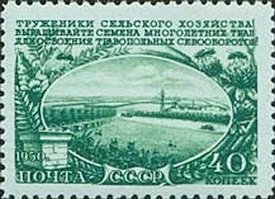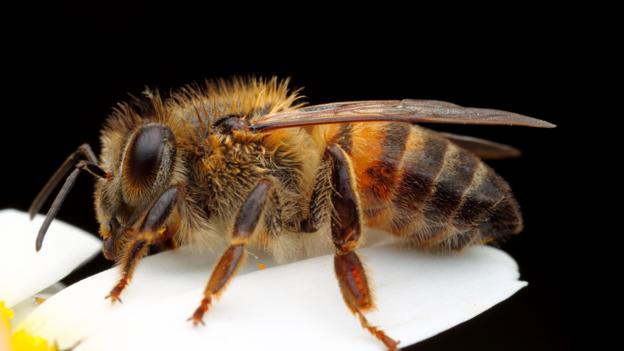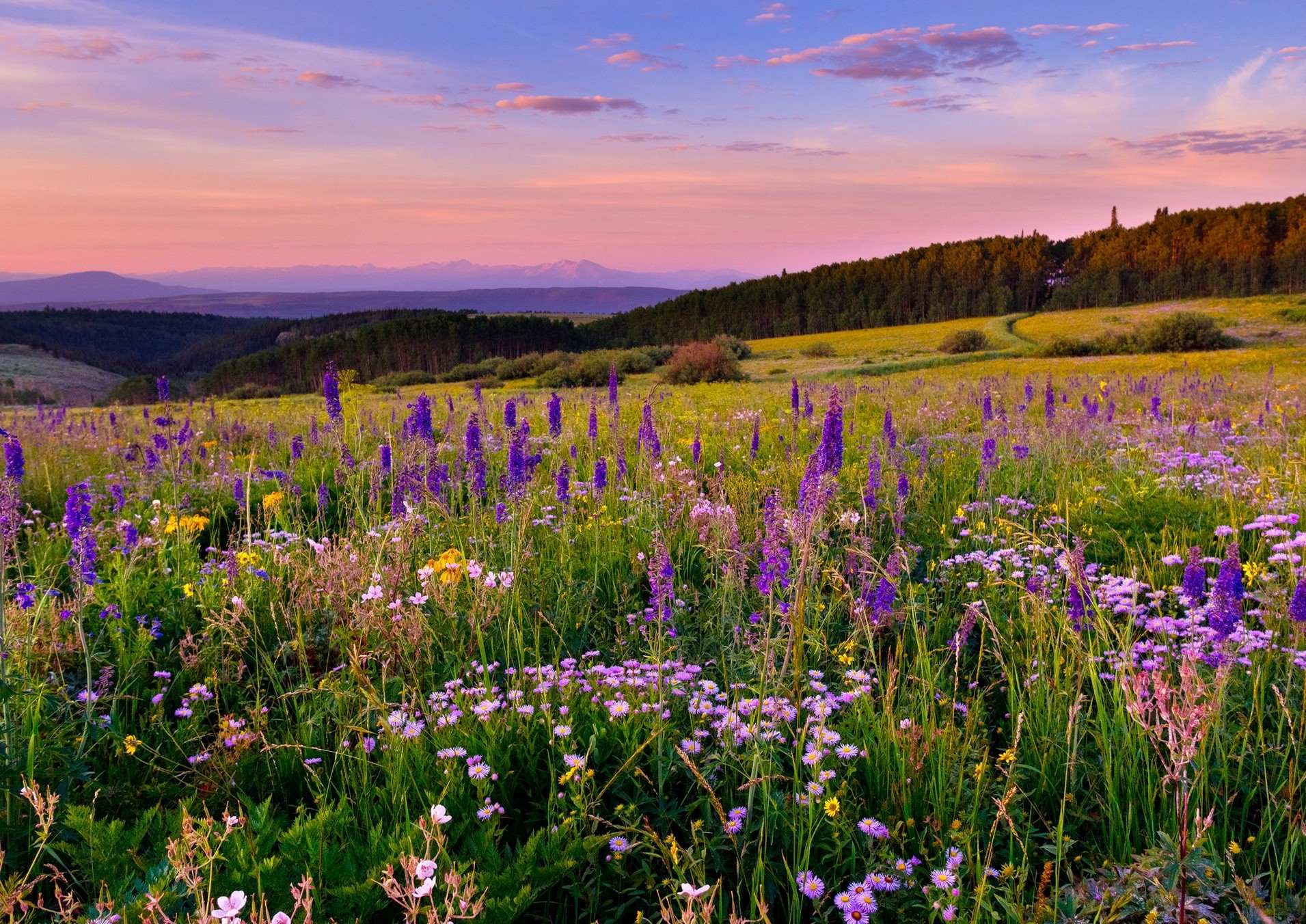Stamp: Meadow, grasses, insects and beehive (Soviet Union, USSR 1951)
Meadow, grasses, insects and beehive (Soviet Union, USSR 1951)
01 January (Soviet Union, USSR ) within release 25th Anniversary of Volkhov Hydroelectric Plant goes into circulation Stamp Meadow, grasses, insects and beehive face value 40 Russian kopek
| Stamp Meadow, grasses, insects and beehive in catalogues | |
|---|---|
| Michel: | Mi:SU 1567 |
Stamp is square format.
Also in the issue 25th Anniversary of Volkhov Hydroelectric Plant:
- Stamp - The dam and bas-relief of Lenin & Stalin face value 40;
- Stamp - Kakhovka Hydroelectric Power Plant face value 20;
- Stamp - Volga-Don canal's map and hydroengineering construstions face value 30;
- Stamp - Dam of Stalingrad Hydroelectric Power Plant face value 40;
- Stamp - Main Turkmen Canal [unbuilt] and cotton-plants face value 60;
- Stamp - Equestrian statue of Jan Žižka in Praha face value 20;
- Stamp - Monument to soldiers of Soviet Army in Ostrava face value 25;
- Stamp - Julius Fučík (1903-1943), Czechoslovak author face value 40;
- Stamp - Building of Bedřich Smetana Museum in Praha face value 60;
- Stamp - Volkhov Hydroelectric Plant named after V.I. Lenin face value 40;
- Stamp - Budapest: Liberty Bridge face value 25;
- Stamp - Budapest: Parliament face value 40;
- Stamp - Budapest: National Museum face value 60;
- Stamp - Combine harvester face value 25;
- Stamp - Meadow, grasses, insects and beehive face value 40;
- Stamp - Citrus harvesting face value 1;
- Stamp - M.I. Kalinin Museum in Moscow face value 20;
- Stamp - Mikhail I. Kalinin (1875-1946), Soviet statesman face value 40;
- Stamp - Felix E. Dzerzhinsky (1877-1926), Soviet statesman face value 40;
|
Data entry completed
43%
|
|
|---|---|
| Stamp Meadow, grasses, insects and beehive in digits | |
| Country: | Soviet Union, USSR |
| Date: | 1951-01-01 |
| Format: | Stamp |
| Face Value: | 40 Russian kopek |
Stamp Meadow, grasses, insects and beehive it reflects the thematic directions:
A landscape is the visible features of an area of land, its landforms and how they integrate with natural or man-made features. A landscape includes the physical elements of geophysically defined landforms such as (ice-capped) mountains, hills, water bodies such as rivers, lakes, ponds and the sea, living elements of land cover including indigenous vegetation, human elements including different forms of land use, buildings and structures, and transitory elements such as lighting and weather conditions. Combining both their physical origins and the cultural overlay of human presence, often created over millennia, landscapes reflect a living synthesis of people and place that is vital to local and national identity. The character of a landscape helps define the self-image of the people who inhabit it and a sense of place that differentiates one region from other regions. It is the dynamic backdrop to people’s lives. Landscape can be as varied as farmland, a landscape park, or wilderness. The earth has a vast range of landscapes, including the icy landscapes of polar regions, mountainous landscapes, vast arid desert landscapes, islands and coastal landscapes, densely forested or wooded landscapes including past boreal forests and tropical rainforests, and agricultural landscapes of temperate and tropical regions.
An economy is an area of the production, distribution and trade, as well as consumption of goods and services. In general, it is defined as a social domain that emphasize the practices, discourses, and material expressions associated with the production, use, and management of resources. A given economy is a set of processes that involves its culture, values, education, technological evolution, history, social organization, political structure, legal systems, and natural resources as main factors. These factors give context, content, and set the conditions and parameters in which an economy functions. In other words, the economic domain is a social domain of interrelated human practices and transactions that does not stand alone.
Insects (from Latin insectum, a calque of Greek ἔντομον [éntomon], "cut into sections") are a class (Insecta) of hexapod invertebrates within the arthropod phylum that have a chitinous exoskeleton, a three-part body (head, thorax and abdomen), three pairs of jointed legs, compound eyes and one pair of antennae. They are the most diverse group of animals on the planet, including more than a million described species and representing more than half of all known living organisms. The number of extant species is estimated at between six and ten million, and potentially represent over 90% of the differing animal life forms on Earth. Insects may be found in nearly all environments, although only a small number of species reside in the oceans, a habitat dominated by another arthropod group, crustaceans. The life cycles of insects vary but most hatch from eggs. Insect growth is constrained by the inelastic exoskeleton and development involves a series of molts. The immature stages can differ from the adults in structure, habit and habitat, and can include a passive pupal stage in those groups that undergo 4-stage metamorphosis (see holometabolism). Insects that undergo 3-stage metamorphosis lack a pupal stage and adults develop through a series of nymphal stages. The higher level relationship of the Hexapoda is unclear. Fossilized insects of enormous size have been found from the Paleozoic Era, including giant dragonflies with wingspans of 55 to 70 cm (22–28 in). The most diverse insect groups appear to have coevolved with flowerin plants.
Agriculture is the cultivation and breeding of animals, plants and fungi for food, fiber, biofuel, medicinal plants and other products used to sustain and enhance human life.[1] Agriculture was the key development in the rise of sedentary human civilization, whereby farming of domesticated species created food surpluses that nurtured the development of civilization. The study of agriculture is known as agricultural science. The history of agriculture dates back thousands of years, and its development has been driven and defined by greatly different climates, cultures, and technologies. Industrial agriculture based on large-scale monoculture farming has become the dominant agricultural methodology.
Bees are winged insects closely related to wasps and ants, known for their roles in pollination and, in the case of the best-known bee species, the western honey bee, for producing honey. Bees are a monophyletic lineage within the superfamily Apoidea. They are currently considered a clade, called Anthophila. There are over 20,000 known species of bees in seven recognized biological families. Some species – including honey bees, bumblebees, and stingless bees – live socially in colonies while most species (>90%) – including mason bees, carpenter bees, leafcutter bees, and sweat bees – are solitary.
A meadow (/ˈmɛdoʊ/ MED-oh) is an open habitat or field, vegetated by grasses, herbs, and other non-woody plants. Trees or shrubs may sparsely populate meadows, as long as these areas maintain an open character. Meadows can occur naturally under favourable conditions, but are often artificially created from cleared shrub or woodland for the production of hay, fodder, or livestock. Meadow habitats, as a group, are characterized as "semi-natural grasslands", meaning that they are largely composed of species native to the region, with only limited human intervention.
Flora is the plant life occurring in a particular region or time, generally the naturally occurring or indigenous—native plant life. The corresponding term for animal life is fauna. Flora, fauna and other forms of life such as fungi are collectively referred to as biota. Sometimes bacteria and fungi are also referred to as flora, as in the terms gut flora or skin flora.







